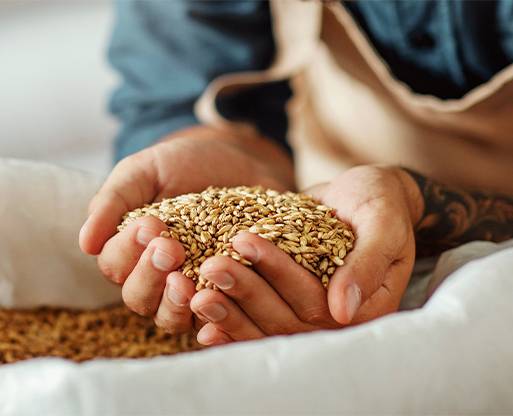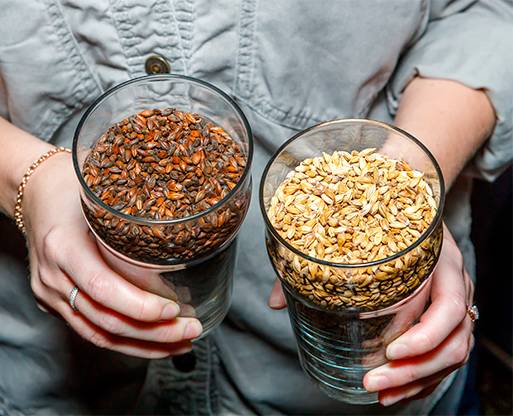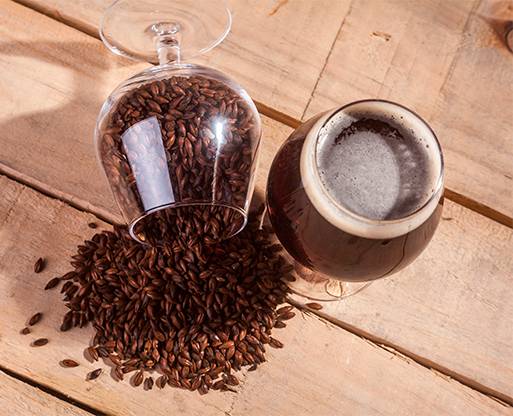Malt: types and elaboration

Julio Cerezo - Beer Sommelier
Director of Sabeer Beer Academy
In a previous article we talked about how malt was the base of all beer, which along with water, hops and yeast is one of the four fundamental ingredients for brewing beer. We are going to look a little closer at the malts that brewers use today, and how each of them affects the colour, smell and taste of the beer.
Although there is a wide range of malts, nearly all of them fall into three groups or families with common functions and features, differentiating them from the other groups:
Base malt
This is the name given to the malts that always form the base of a brewing recipe owing to their high fermentation power. They generally consist of barley that has been subjected to high moisture levels of around 50% and temperatures between 15ºC and 20ºC to cause the seeds to germinate.
Once this happens, the grain is then dried using warm air no hotter than 40ºC which once again reduces the moisture level, but without actually roasting the grain. Therefore, it is apparently similar in appearance to unmalted cereal, although there have been changes inside that will transform the starch in sugars that the yeast will be able to ferment.

These base malts confer a golden colour to the beer and a bready smell, sometimes even reminiscent of honey, such as the case of the popular Pilsen malt.
Beers to try: Staropramen (5%). is a typical Czech beer in which the base malt confers moderate sweetness to the cereal without any hints of roasting, which is set off by the freshness of Central European hops.
Roasted malt

This type of malt undergoes largely the same malting process as the former, but the drying is carried out at higher temperatures, which can even reach 100ºC in some varieties, such as those known as Crystal malt. Roasted malts acquire a more amber, reddish or brown colour which characterise the colour of the finished beer afterwards. It also confers hints of caramel, bread crust and nuts.
It also confers hints of caramel, bread crust and nuts. This type of malt is never used alone in the recipe since its fermenting power is much lower than that of base malts. Despite the separate roles they play, some malts can fall into both categories and perform the same functions, such as Munich or Vienna malts, which in turn lend their names to two long-established brewing styles.
Beers to try: Voll Damm (7,2%). In which the malt is the most characteristic feature, owing to the proportion and roast alike, making it a much more sensory beer than the more widely consumed pale lagers.
Dark malt
Dark malts obtain their colour by drying the barley at constant temperatures of around 200ºC. The beer made from this type of malt is also dark, with a complex blend of flavours of coffee, chocolate or liquorice.
Because of the high roasting temperature, and the fact that their sugar content is relatively low, these malts are not used on their own to brew dark beer. Fermentation, when adding yeast, would be insufficient to produce the alcohol content and carbonation that are so typical of these beers. Therefore, any dark beer or black beer recipes always contain a majority percentage of base malt and a smaller amount of dark malt, which is enough to confer its characteristic colour and smell.

Beers to try: Guinness Draught (4,2%). dark malt gives this Irish stout, its characteristic black colour and hints reminiscent of coffee in the nose and mouth.
Cheers!
What do you think about?
Share comments, opinions and tricks with the Community







